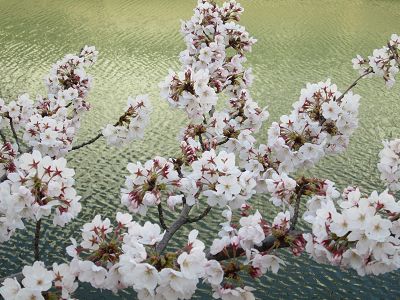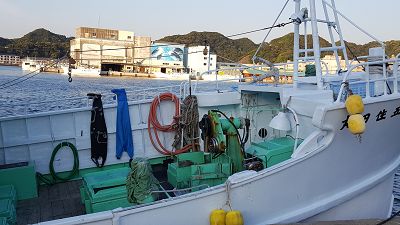|
Tokyo, Seto Naikai, Kii Peninsula, Sakura time 2018
| |||
| Hanami in Koto Ward | Seto Naikai: Konpira-san | Kyoto Toban Museum | |
| Hanami in Ueno Koen | Seto Naikai: Ritsurin Koen | After Kodo: Kii Katsuura | |
| Makino Botannical Garden | Seto Naikai: Naoshima | ||
| Katsurahama Beach | Kurashiki | ||
|
Prev: Kumano Nahahechi - the "Kodo"
Click on any for a larger view Next: Family Gatherings
| |||
|
Bruce's 23rd visit to Japan. This features far more travel than the past 35 years permitted us. While (briefly) in Tokyo we reside in our own little condo located near Toyocho. Be sure to view "Kodo" and "Family" for more views of our exciting trip. "Hanami" means flower "hana" see "mi". Seto Naikai is the "Inland Sea." Via Anime I have recently taken particular interest in Seto Naikai. It consists of thousands of islands and peninsulas, many cities and villages. It is less transformed by western influence and modern technology. Many peoples' lives are engaged with the sea. | |||
|
Sakura viewing ("hanami") consumes everyone. Koto Ward, "Kotoku", is our place of residence in Tokyo. Known since the Edo era as "Shitamachi" or "low town", it was where the artisans and commoners resided in Edo. It is "low" both socially and physically. Criscrossed by many canals, it is but a couple meters above sea level. 99% burned by Allied bombing in WWII, almost nothing in Koto is old. Its decimation allowed the creation of numerous parks and greenways as it was rebuilt.
| ||
|
Ueno is the "must see" locale for Hanami.
| ||
|
Makino Botannical Garden, Kochi
| ||
|
Katsurahama Beach in front and down the bluff from our hotel in Kochi.
| ||
|
"Konpira-san", "1000 step temple" in Kotohira (Seto Naikai vicinity)
| ||
|
Ritsurin Koen, in Takamatsu, Seto Naikai vicinity.
This very old garden is a preserve of (human devised) plant diversity. Its variety of pines is prodigious. The buildings in the Garden date back to the early 17th century. In 1625, the feudal lord of Takamatsu in Sanuki Province, Ikoma Takatoshi, began construction of Ritsurin, specifically the building of a garden around the South Pond using the beautiful greenery of Mt. Shiun (Purple Cloud Mountain) as a backdrop. Beginning in 1642, Matsudaira Yorishige took over the area and continued its construction. The work was completed by the Fifth Lord Yoritaka in 1745 after 100 years of improvements and extensions made by the successive lords. | ||
|
Google "Naoshima" and read as much as patience permits. It is an island dedicated to "art." Actually two thirds of the island are still dedicated to a Mitsubishi smelting operation which turned a large portion of the island a biologically dead zone. In the 80's, Benesse Holdings, founded by a rich Dane, assumed control of a third of the island with intention of dedicating it to art. At the current premier attraction, the Chichu underground art museum designed by Ando, photographs are strictly prohibited, so look to the Web. Art installations, other museums and "art houses" are scattered about the accessible third of the island.
| ||
|
Kurashiki, an old warehouse town which was not destroyed in WWII. In the Meiji era it found a new purpose as a cotton fabric milling town. It had a important role in Japan industrial history. The Ohara company was renowned for its forward-looking welfare ideal, "fukuri kosei" and was far ahead of its time in industrial safety concern.
| ||
|
This Ando building contains replicas of a few extremely famous paintings in the medium of ceramic. Hence the works are not sensitive to UV, can be exposed to full sun and are not vulnerable to soneone's sneeze. Several have been reproduced at several times the scale of the originals. They can be studied up close.
| ||
|
After spending the night in Kii Katsuura a short ride from Nachi, we survey the early morning tuna catch. Kii Katsuura is famous for local tuna.
| ||















































































































